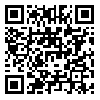Volume 7, Issue 27 (1-2008)
refahj 2008, 7(27): 139-190 |
Back to browse issues page
Download citation:
BibTeX | RIS | EndNote | Medlars | ProCite | Reference Manager | RefWorks
Send citation to:



BibTeX | RIS | EndNote | Medlars | ProCite | Reference Manager | RefWorks
Send citation to:
Madani ghahfarokhi S. (2008). Drug Management Periods in Iran. refahj. 7(27), 139-190.
URL: http://refahj.uswr.ac.ir/article-1-2019-en.html
URL: http://refahj.uswr.ac.ir/article-1-2019-en.html
Abstract: (5741 Views)
Objectives: Shall we consider the repeat of spoilt addiction cycle and unsuccessful measures taken to solve the drug abuse problem, a convinced result of geo-politic situation and other reasons out of drug management hands? Or shall we consider it as inefficiency and weakness of the current management?
However without analyzing Iranian society’s structure, it’s historical development, Iranian cultural specifications, analyzing Iranian- Islamic identity, Islamic cults and Islam’s attitude towards addiction and drug abuse, power structure and it’s role in drug trafficking, Iranian sub-cultures, Iran’s geo- politic situation in the region and Iranian personality’s characteristics it is impossible to get a deep knowledge about a permanent social phenomenon, which is reported in Iranian public and personal lives for centuries and judge about the reasons of it’s permanency. This paper does not review all the factors related to above- mentioned questions but it only assesses the role of drug management after Islamic revolution.
Method: This research is a descriptive study and based on that tries to give a broad, substantial and detailed understanding, i.e. a grounded theory, of the problem .The participants of this research were high rank public managers active in addiction field between 1979 and 2001. The data are gathered from review and semi- structured in- depth- interviews and then were analyzed.
Findings: periods of drug management can be defined due to policy changes. These policies have changed for 4 reasons: 1) Change of manager or managers, 2) Change in law, 3) Change in general management especially changes in executive body (led by the President) and 4) occurrence or end of an important event like revolution or war. Therefore Drug Management periods between 1979 and 2001 can be divided to four periods:
1. First period: revolutionary anger against addiction (1979-1980).
2. Second period: moderation of revolutionary anger and denial about addiction (1980-1988).
3. Third period: restructuring drug control (1988-1993).
4. Fourth period: criticizing past, looking at future’s horizons (1993-2001).
Results: the most important characteristics of drug management after revolution were:
1. Except some years during Iran- Iraq war, almost always addiction has been noticed in national level.
2. Although managers related to addiction issue has been long servicing in their position but they were mostly not educated in any of prevention, treatment and rehabilitation fields and did not have required scientific qualifications.
3. Drug control managers had records of military, security or judicial activities and may be this is why supply reduction has always been the main discourse for fighting against drugs programs.
4. On the eve of third drug management period, expediency council’s ratification upgraded drug control organization structurally, after transferring PM’s authorization to the president, as a body directly under the authority of the president. Consequently intersectional policies were neglected by the means of competition between involved bodies and drug control organization’s management’s ignorance of intersectional policies.
5. Despite broad and fast spread of addiction in the years after revolution, drug management was moving slowly and occasional so their policies were always passive and delayed.
6. Except 4th period of drug management we can not regularly observe addiction reduction and control programs’ focus on special groups. This approach changed gradually.
7. In spite of all the above mentioned weak points, drug management moved forward and obtained a more scientific and realistic understanding of the addiction and drug abuse condition.
Type of Study: orginal |
Received: 2015/08/29 | Accepted: 2015/08/29 | Published: 2015/08/29
Received: 2015/08/29 | Accepted: 2015/08/29 | Published: 2015/08/29
Send email to the article author
| Rights and permissions | |
 |
This work is licensed under a Creative Commons Attribution-NonCommercial 4.0 International License. |





